Australia’s Apaches Arrive, and the MiG-29 Takes Flight Again in History
Down Under, Australia welcomes its first AH-64Es as we look back on the1977 debut of the MiG-29 - and compare it to the F-16
“The helicopter is evidence that man’s imagination can give physical form to his dreams.”
— Igor Sikorsky
Mission Briefing
Australia’s First AH-64E Apaches Arrive at Townsville
The Australian Army begins its transition to the Apache, marking a major leap in attack aviation capability and a new chapter for Army Aviation.
The Australian Army’s future in attack aviation has officially taken flight. On October 2, 2025, the first two AH-64E Apache helicopters touched down at RAAF Base Townsville—marking the beginning of a new era as they replace the long-serving, but trouble-prone, Tiger Armed Reconnaissance Helicopter. The aircraft, delivered aboard a U.S. Air Force C-17 Globemaster, are the first of 29 Apaches acquired through a $3.5 billion Foreign Military Sale with the United States.
With this delivery, Australia becomes the 18th nation to field the Apache, joining an international fleet of more than 1,300 aircraft. Two additional helicopters will arrive by the end of this year, with full delivery expected by 2029. The 1st Aviation Regiment—currently transitioning from the Tiger—will operate the fleet from Townsville, supported by crews trained in both the U.S. and U.K.
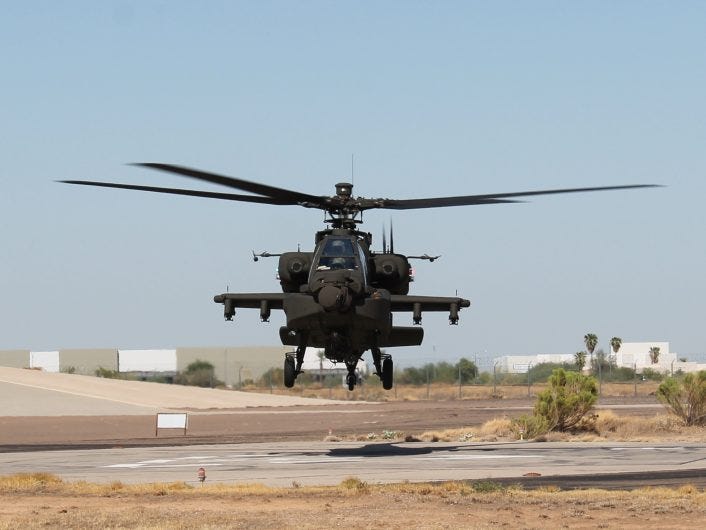
Deputy Prime Minister Richard Marles called the Apache “a critical step change in attack aviation capability,” emphasizing its role in strengthening Australia’s northern defense posture. The AH-64E brings proven battlefield versatility, advanced networking, and manned-unmanned teaming—allowing pilots to control drones directly from the cockpit.
Defense Industry Minister Pat Conroy added that the Apache will “modernize the Army and transform it into a force optimized for littoral maneuver and long-range strike.” The government is also investing $700 million to upgrade RAAF Base Townsville’s infrastructure and establish the new Townsville Aviation Training Academy to support both Apache and Chinook operations.
Australian industry participation is another highlight of the program. Local firms including Cablex, Ferra, Axiom Precision Manufacturing, and Mincham will supply wiring, components, and composites for both domestic and international Apache production. Boeing Defence Australia has also secured a seven-year sustainment contract, ensuring sovereign maintenance, engineering, and training capabilities.
As the Apaches arrive, the Tiger fleet nears retirement after two decades of mixed service. Introduced in 2004, the Tiger faced persistent maintenance and reliability challenges that limited its readiness. The Army plans to fully withdraw the type by 2028, marking the end of one chapter—and the beginning of another.
With the Apache’s arrival, the Australian Army joins a global community of operators whose aircraft have seen combat across multiple continents. But for the soldiers of the 1st Aviation Regiment, the mission begins at home in Townsville—where the next generation of Australian Army Aviation is ready to take charge and move out.
This Week in Aviation History
The Birth of the MiG-29: A New Soviet Fighter Takes Flight
Test pilot Alexander Fedotov takes the MiG-29 into the skies for the first time, ushering in a new era of fourth-generation fighters.
6 October 1977 - at Ramenskoye Airfield near Moscow, the Soviet Union’s latest creation took to the air for the very first time. The aircraft—prototype “9-01”—was the Mikoyan MiG-29A, the first of eleven prototypes that would shape one of the most recognizable fighters of the Cold War. At the controls was Chief Test Pilot Alexander Vasilievich Fedotov, Hero of the Soviet Union and one of the most accomplished aviators in Soviet history.
Fedotov was no stranger to breaking barriers. Having joined the Mikoyan Design Bureau in 1958, he would go on to set eighteen world records for speed, altitude, and time-to-climb—many of them in experimental MiG aircraft. Just weeks before the MiG-29’s first flight, he had pushed a modified MiG-25 to an altitude of 123,534 feet, a record that still stands today. His career, however, would later end tragically in 1984 during a MiG-31 test flight.
The MiG-29A, which Fedotov helped bring to life that day, represented a major technological leap for Soviet aviation. Designed as a Mach 2-plus air superiority fighter, it was built to counter the latest American F-15 and F-16 designs with agility, power, and rugged simplicity. Powered by two Klimov RD-33 turbofans, each producing more than 18,000 pounds of thrust with afterburner, the jet could reach Mach 2.25 and soar above 59,000 feet. Its range of nearly 900 miles made it ideal for homeland defense and short-range interception.
Armed with a 30mm GSh-301 cannon and up to six missiles, the MiG-29 was a pure dogfighter at heart. Pilots praised its ability to withstand high angles of attack and its forgiving flight characteristics—rare among fighters of its time.
The type entered operational service with the Soviet Air Force in 1983, and soon became one of the most widely exported fighters in the world. Over 1,600 MiG-29s have been produced, serving in more than 25 air forces from India to Poland. Later variants, like the MiG-29SMT and MiG-35, continue to fly today, proving the enduring legacy of the aircraft Fedotov first lifted into the skies nearly half a century ago.
The MiG-29 was more than a new jet—it was a statement of Soviet engineering prowess and a symbol of Cold War airpower. And at its birth stood Alexander Fedotov, a test pilot who quite literally pushed the limits of flight.
Sidebar: MiG-29 vs. F-16 — Cold War Adversaries in the Sky
When the MiG-29 first flew in 1977, Western analysts quickly recognized its purpose: it was the Soviet answer to America’s F-16 Fighting Falcon. Both aircraft emerged from competing doctrines—each reflecting its nation’s priorities in air combat.
Design Philosophy
The F-16, born from the U.S. “Lightweight Fighter” program, emphasized agility, visibility, and advanced avionics in a single-engine airframe. It was designed to be simple, affordable, and lethal in close combat.
The MiG-29, by contrast, was a heavier twin-engine design that balanced dogfighting agility with the ability to operate from rough, forward-area airstrips. Soviet engineers built it to be rugged, easily serviced in the field, and capable of short-takeoff operations—critical for the USSR’s dispersed basing strategy.
Performance
Mikoyan MiG-29A “Fulcrum” (Baseline Variant)
Role: Air Superiority Fighter
Crew: 1
Length: 17.3 m (56 ft 9 in)
Wingspan: 11.4 m (37 ft 5 in)
Height: 4.7 m (15 ft 5 in)
Empty Weight: 11,000 kg (24,250 lb)
Max Takeoff Weight: 20,000 kg (44,100 lb)
Powerplant: 2 × Klimov RD-33 afterburning turbofans
Thrust: 8,300 kgf (18,300 lbf) each with afterburner
Maximum Speed: Mach 2.25 (2,400 km/h / 1,490 mph at altitude)
Combat Range: 700 km (435 mi) on internal fuel
Ferry Range: 1,430 km (888 mi)
Service Ceiling: 18,000 m (59,100 ft)
Rate of Climb: ~330 m/s (65,000 ft/min)
Armament:
1 × 30 mm GSh-301 cannon with 150 rounds
Up to 4,000 kg (8,800 lb) of ordnance on 6 hardpoints
Typically R-60, R-73, or R-27 air-to-air missiles
Avionics: N019 “Rubin” pulse-Doppler radar, infrared search and track (IRST), helmet-mounted sight
Entered Service: 1983 (Soviet Air Force)
General Dynamics F-16A “Fighting Falcon” (Baseline Variant)
Role: Multirole Fighter
Crew: 1
Length: 15.0 m (49 ft 5 in)
Wingspan: 9.96 m (32 ft 8 in)
Height: 4.88 m (16 ft 0 in)
Empty Weight: 8,570 kg (18,890 lb)
Max Takeoff Weight: 19,200 kg (42,300 lb)
Powerplant: 1 × Pratt & Whitney F100-PW-200 afterburning turbofan
Thrust: 10,800 kgf (23,830 lbf) with afterburner
Maximum Speed: Mach 2.0 (2,120 km/h / 1,320 mph at altitude)
Combat Radius: 550 km (340 mi) for low-altitude, hi-lo-hi mission
Ferry Range: 2,800 km (1,740 mi) with drop tanks
Service Ceiling: 15,200 m (50,000 ft)
Rate of Climb: ~254 m/s (50,000 ft/min)
Armament:
1 × 20 mm M61A1 Vulcan cannon with 511 rounds
Up to 7,700 kg (17,000 lb) of stores on 9 hardpoints
AIM-9, AIM-120, air-to-ground bombs, rockets, and pods
Avionics: AN/APG-66 radar, fly-by-wire control system, heads-up display
Entered Service: 1979 (U.S. Air Force)
Together, these two fighters defined Cold War air combat—one optimized for rugged simplicity and brute thrust, the other for precision, avionics, and adaptability.
Avionics & Handling
Early F-16s had a decisive edge in avionics—particularly their fly-by-wire controls, advanced radar, and heads-up display. Western pilots also benefited from superior situational awareness and missile systems.
The MiG-29 countered with exceptional low-speed maneuverability thanks to leading-edge root extensions (LERX) and powerful engines. Its helmet-mounted sight and R-73 Archer missile combination gave it a deadly advantage in close-range dogfights—something NATO pilots learned to respect after the Cold War when they finally trained against ex-Warsaw Pact Fulcrums.
Verdict
While the F-16 dominated in electronics and multi-role flexibility, the MiG-29 excelled in raw performance and close-quarters agility. In many ways, they were two sides of the same coin—each optimized for its nation’s style of warfare.
Both fighters remain in service today, continuously upgraded and modernized—proof that their designers got the fundamentals right nearly 50 years ago.
In Case You Missed It
50 years ago there was a surge in fighter design that has many designs still flying, including what many argue is the greatest fighter ever, the Eagle:
Photo Outlet
Every issue of Hangar Flying with Tog gets you a free image that I’ve taken at airshows:
Feel free to use these photos however you like, if you choose to tag me, I am @pilotphotog on all social platforms. Thanks!
Post Flight Debrief
Like what you’re reading? Stay in the loop by signing up below—it’s quick, easy, and always free.
This newsletter will always be free for everyone, but if you want to go further, support the mission, and unlock bonus content, consider becoming a paid subscriber.
Your support keeps this flight crew flying—and I couldn’t do it without you.
– Tog



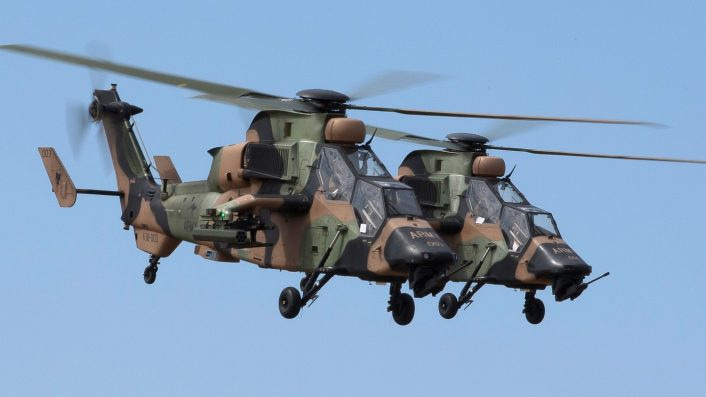
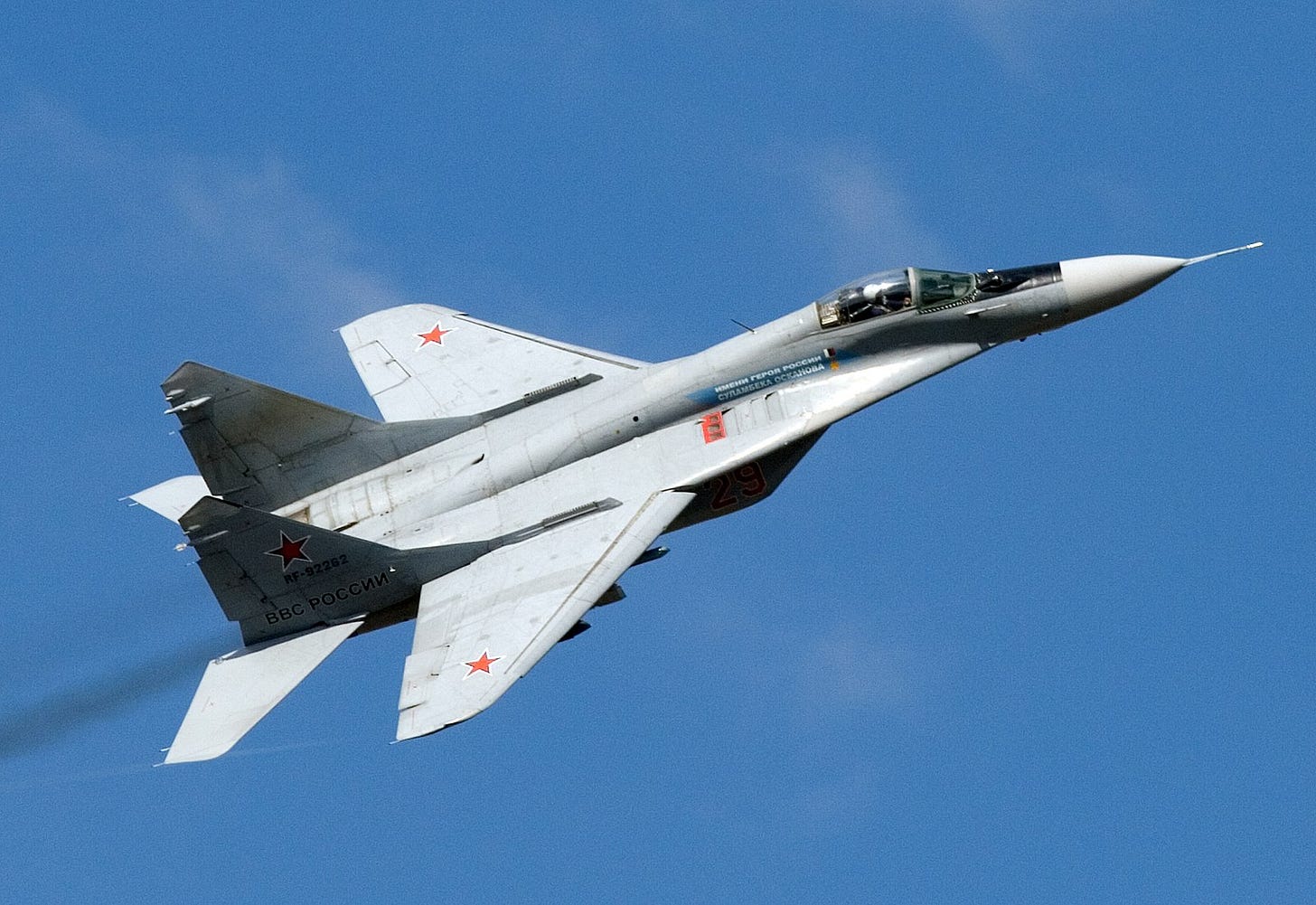
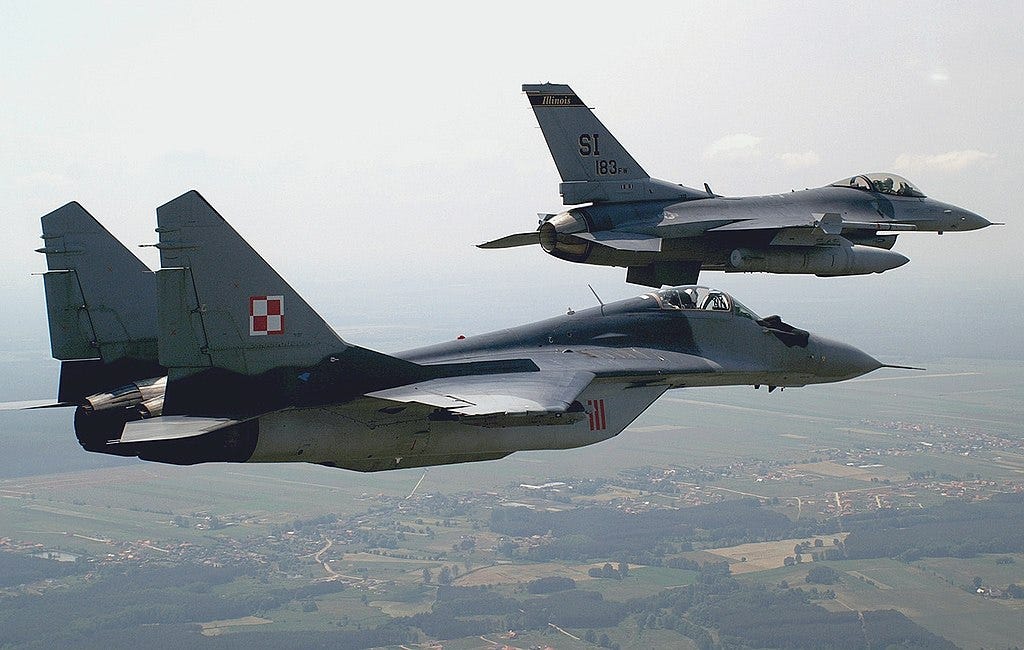
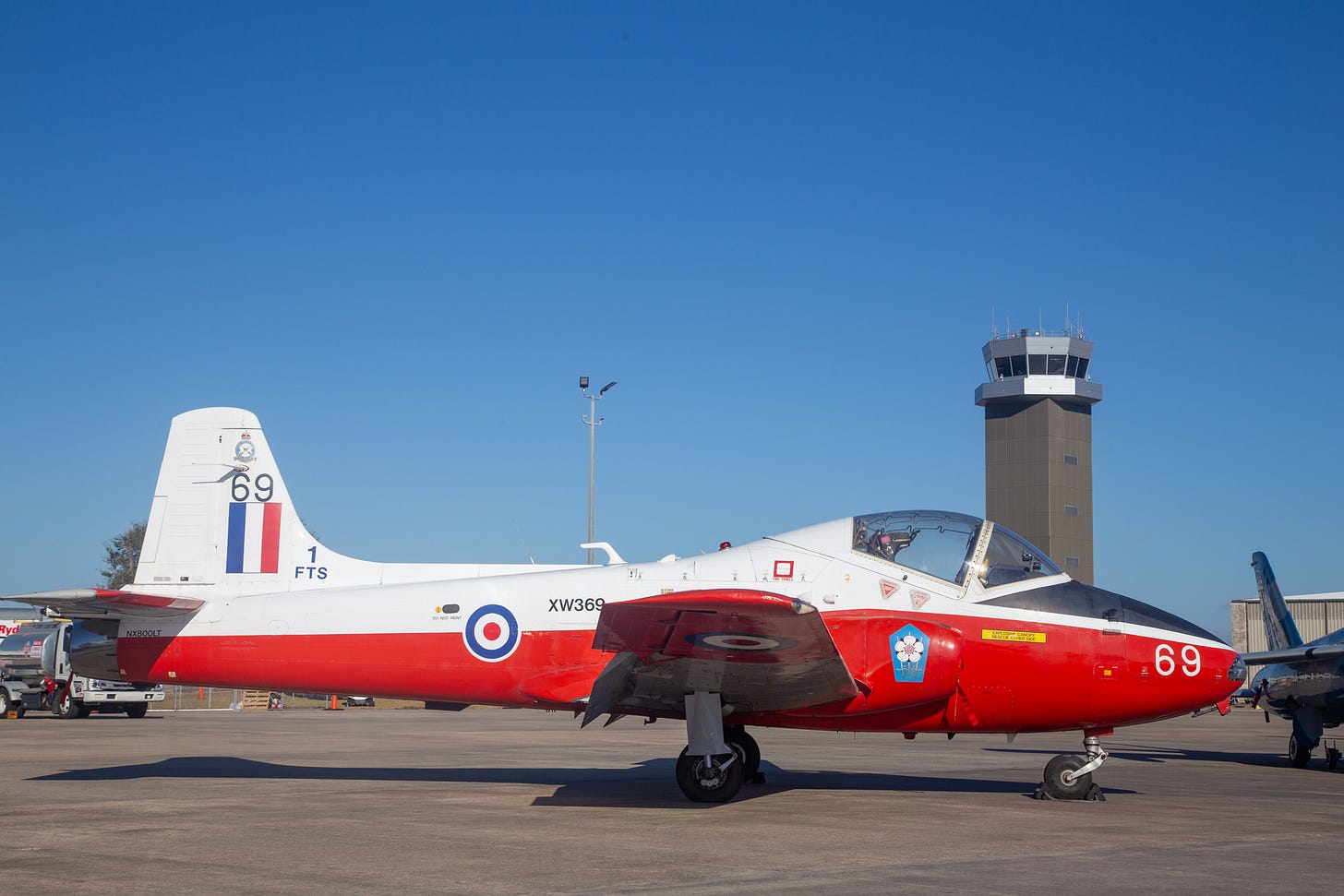
The unidentified plane in the post is a British HP P-84 Jet Trainer